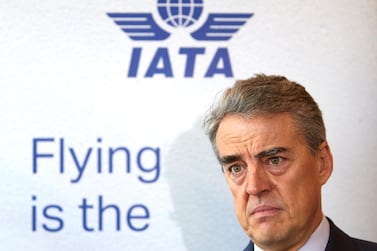China’s deepest economic slump in decades carries warnings and lessons for the rest of the world as nations from Germany to the US face the likelihood of following it into recession.
First, the upheaval led to a dramatic fall in services and consumption as people’s movements were restricted, dealing a hammer blow to airlines, hotels, restaurants and shopping malls. That compounded a collapse in the manufacturing sector as assembly lines went idle while workers stayed home.
The insights from China include the need for urgent measures to contain the virus and not to underestimate the economic hit that it will create. But above all, don’t expect normal service to resume for some time.
“The world is following China in February,” said Trinh Nguyen, Hong Kong-based senior economist at Natixis. “Supply and demand shocks are now going global.”
There are some key economic lessons for the world to learn from China’s experience since mid-January.
Virtually across the board, economists failed to capture how wrenching the fall out would be. Since the first GDP forecast cuts started coming in late January, there have been a succession of lower and lower estimates as initial expectations for a rapid (or V-shaped) recovery vapourised.
Data on Monday that showed a historic slump in retail sales, industrial output and fixed-asset investment – well beyond what economists anticipated – is fueling further outlook cuts. Australian bank Macquarie Group expects a 6 per cent contraction this quarter compared to a year earlier. A Bloomberg Economics model shows China’s GDP is tracking about 20 per cent lower year-on-year in the first two months.
Underestimating the hit isn’t unique to China. In mid- February, weeks into the virus outbreak, global policy makers were still talking of a rebound as their base case. In a surveillance note released February 19, the IMF left unchanged its January projection that global growth will accelerate to 3.3 per cent this year from 2.9 per cent in 2019.
China faced some criticism in terms of the amount of time it took for warnings of the outbreak to emerge. That delay compounded the disruption then needed to control it. It’s a lesson other countries appear to have missed, with charges that governments from Washington to Tokyo have been slow to act, leaving central banks and finance ministries scrambling to contain the damage.
“I think that for all the countries with just a few dozen cases, and maybe just a handful of new cases each day, feeling relatively unscathed, a week can massively change that,” said Robert Carnell, chief economist for Asia Pacific at Dutch lender ING Group in Singapore.
Services in China have taken a bigger hit than manufacturing. Barclays economists last week estimated a plunge in output of around 70 per cent year on year in February, before improving to a decline of 40-45 per cent. That compares to a decline of 30-35 per cent for manufacturing.
Now, a spike in imported cases for China means movement restrictions and home confinement will delay the recovery in services, even as manufacturing slowly gets back on its feet. Store traffic is only creeping back up after falling by as much as 80 per cent at the virus outbreak’s peak.
The virus shut down Hubei province, an economy the size of Sweden’s. It is China’s largest producer of phosphorus, used in fertiliser, and is a key centre for the country’s auto industry with local carmakers like Dongfeng Motor Group and global titans such as PSA Group and Honda Motor making vehicles and components.
Other countries have followed with their own strict shutdowns. In Italy, which is under nationwide lockdown, the crisis has all but paralysed business activity in Lombardy – which accounts for a fifth of the country’s gross domestic product – and the rest of the north, Italy’s economic engine.
It may yet prove that the complete shutdown of an economy is too drastic, said Alexander Wolf, Head of Asia Investment Strategy at JP Morgan Private Bank and a former US diplomat in China.
“Korea’s handling offers a middle ground so I think in time it will make an interesting case study in terms of the economic impact,” Mr Wolf said.
Financial authorities in Beijing acted quickly to support financial markets with liquidity, avoiding the kind of volatility that has rattled the rest of the world. The stock market is among the world’s 20 largest that’s yet to slip into bear territory.
US policymakers didn’t act until the S&P 500 Index tanked 11 per cent in one week. Still, China’s resilience may be tested further.
China’s government has pursued a relatively disciplined policy approach so far. Instead of a borrowing splurge and massive monetary easing, it has been targeting lending to businesses that need it. The People’s Bank of China has pumped money into the financial system and cut the amount of cash that banks have to set aside as reserves.
On the fiscal side, the government has relied on tax cuts and is speeding up spending on infrastructure projects. Local authorities are allowed to sell special bonds to pay for infrastructure investment, and there’s been a push to sell these earlier in the year. There have also been targeted cuts to taxes and social security premiums for virus-hit companies to avoid massive layoffs.
Getting back to normal won’t be easy, though.
Bloomberg Economics estimates China’s back-to-work rate at between 80-85 per cent for the week ending March 13, just above the 70-80 per cent a week earlier. What’s more, they don’t see the process accelerating much faster from here. Health experts have warned that getting back to the office or factory too soon risks a second wave of infection. Therefore, the coming weeks are seen a stress test of how it can be done.







